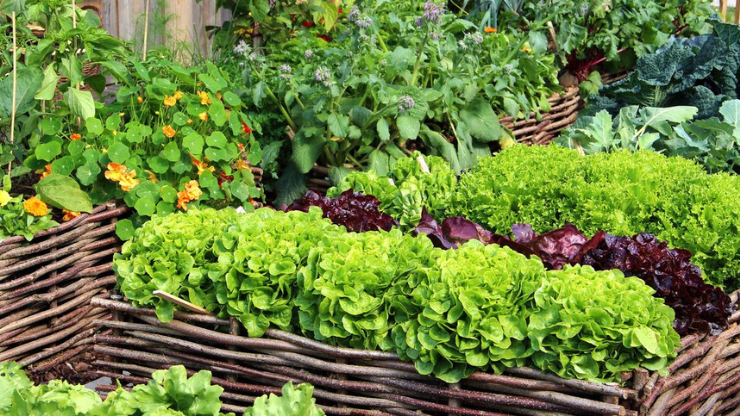Healthy Foods That You Can Easily Grow In Your Kitchen Garden – In today’s fast-paced world, the importance of fresh, nutritious food cannot be overstated. One way to ensure you have access to such food is by growing your own in a kitchen garden. Not only does this provide a convenient and cost-effective way to access healthy produce, but it also offers a sense of satisfaction and connection to nature. In this article, we’ll explore a variety of healthy foods that can be easily grown in your kitchen garden, requiring minimal space, time, and expertise. From vibrant leafy greens to flavorful herbs and versatile vegetables, these options offer both culinary delight and nutritional goodness right at your fingertips. Let’s delve into the world of kitchen gardening and discover how simple it can be to cultivate a bounty of healthful delights in your own home.
Table of Contents
ToggleHealthy Foods That You Can Easily Grow In Your Kitchen Garden
Herbs

Herbs like basil, mint, cilantro, and parsley are not only flavorful additions to meals but also easy to grow indoors. They require well-draining soil, adequate sunlight, and regular watering. You can start them from seeds or purchase seedlings from a nursery. Trim the leaves as needed for culinary use, which also encourages bushier growth. Herbs like basil and mint can even be propagated from cuttings, allowing you to have a continuous supply year-round.
Also, Read – Vegetable-Forward Dishes To Make All Winter
Salad Greens
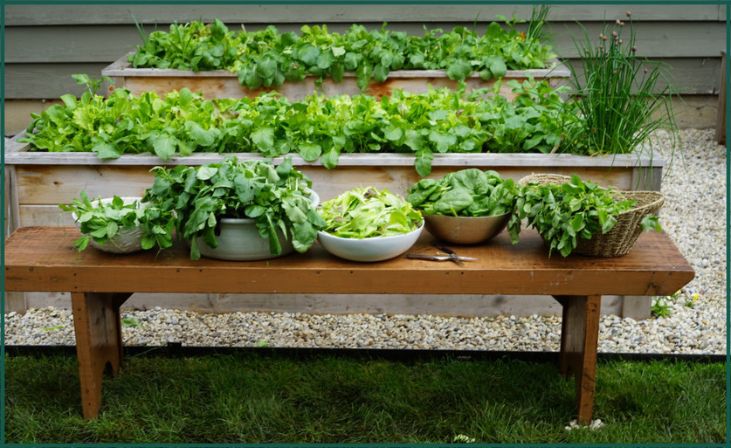
Lettuce, spinach, kale, and arugula are excellent choices for growing in your kitchen garden. They thrive in containers and can be harvested leaf by leaf, allowing for continuous growth. These greens prefer cooler temperatures and partial sunlight. Regular watering is essential to prevent wilting and bitterness. To extend the growing season, consider planting varieties suited for both spring and fall, ensuring a fresh supply of salad greens throughout the year.
Tomatoes
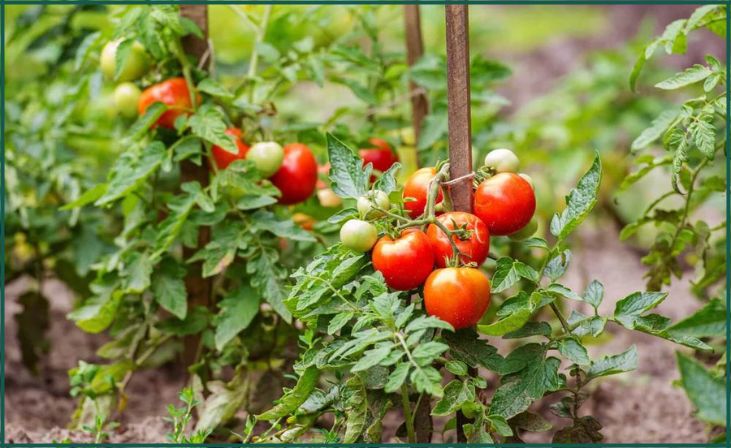
Cherry or grape tomatoes are ideal for growing in pots on your patio or windowsill. Choose compact varieties that are suitable for container gardening and provide support for the vines as they grow. Tomatoes require plenty of sunlight and consistent watering to thrive. You can start them from seeds indoors and transplant them once the weather warms up. Regular pruning and removing suckers help promote airflow and prevent diseases, ensuring a bountiful harvest of juicy tomatoes.
Also, Read – Decadent Desserts with Cream Cheese Frosting
Green Onions
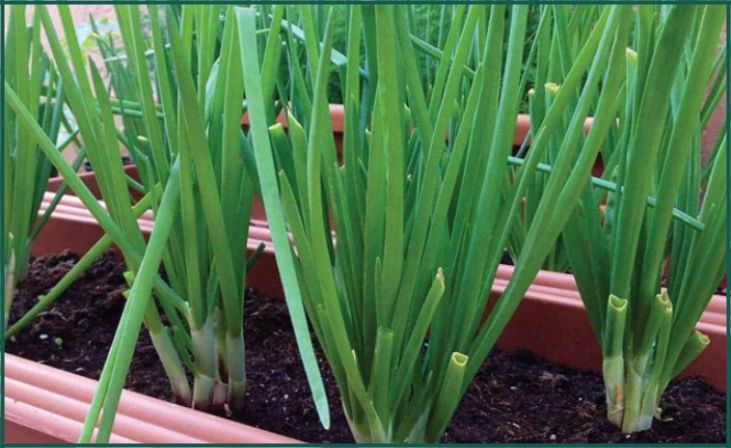
Green onions, also known as scallions, are one of the easiest vegetables to regrow from scraps. Simply place the root end in water or soil, and they will quickly regenerate new shoots. Green onions can be grown indoors or outdoors in pots or directly in the ground. Regular harvesting encourages continuous growth, and they can be used in a variety of dishes, from salads to stir-fries, adding a mild onion flavor.
Don't just scroll, subscribe!
BuzzTrail's unique web-stories are the cure for boredom you've been waiting for.
Microgreens
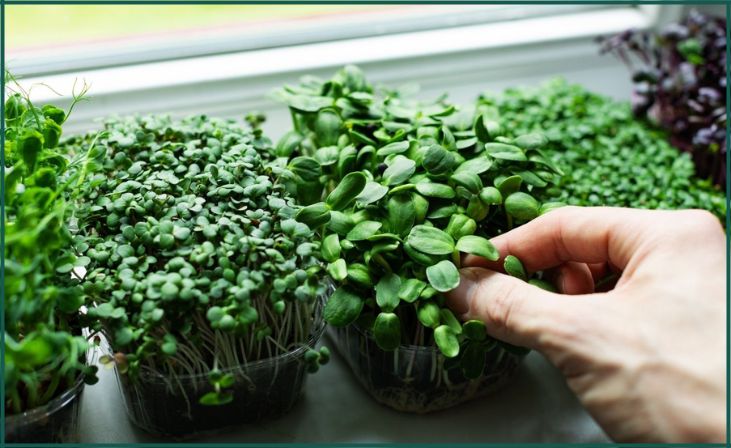
Microgreens are tiny, nutrient-packed greens harvested at an early stage of growth, typically within one to three weeks after germination. They can be grown indoors on a sunny windowsill or under grow lights. Popular microgreen varieties include broccoli, radish, pea shoots, and sunflower greens. They require minimal space and can be grown year-round, providing a concentrated source of vitamins, minerals, and antioxidants to enhance salads, sandwiches, and smoothies.
Bell Peppers
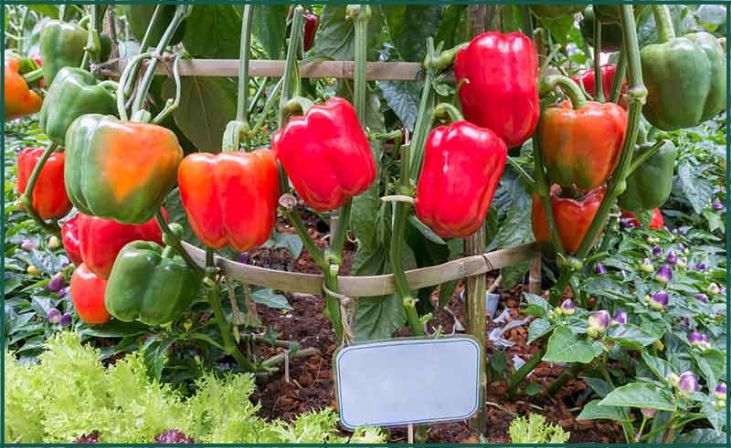
Compact varieties of bell peppers are well-suited for container gardening, making them perfect for growing in your kitchen garden. Choose pots with good drainage and provide support for the plants as they grow. Bell peppers thrive in warm, sunny locations and require regular watering to keep the soil consistently moist. Harvest them when they reach full size and have developed their characteristic color, whether green, red, yellow, or orange, for maximum sweetness and flavor.
Radishes
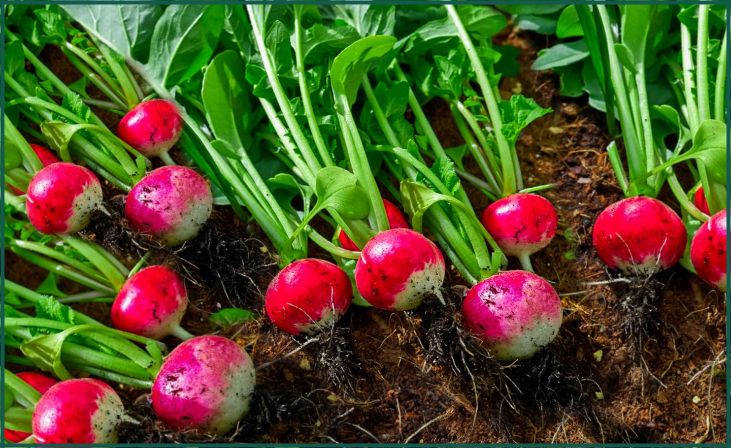
Radishes are quick-growing root vegetables that are perfect for beginners and suitable for growing in containers or directly in the ground. They prefer cool weather and can be planted early in the spring or fall. Radishes require well-draining soil and regular watering to prevent cracking and promote tender, crisp roots. They come in a variety of shapes, sizes, and colors, including round red radishes, elongated daikon radishes, and colorful watermelon radishes, adding a spicy crunch to salads and snacks.
Strawberries

Certain varieties of strawberries are well-suited for container gardening, allowing you to enjoy fresh, juicy berries even in limited space. Choose compact or trailing varieties that produce fruit throughout the growing season. Provide well-draining soil, ample sunlight, and regular watering to encourage healthy growth and abundant fruiting. Protect strawberries from birds and pests with netting or row covers, and harvest them when fully ripe for the sweetest flavor.
Cucumbers
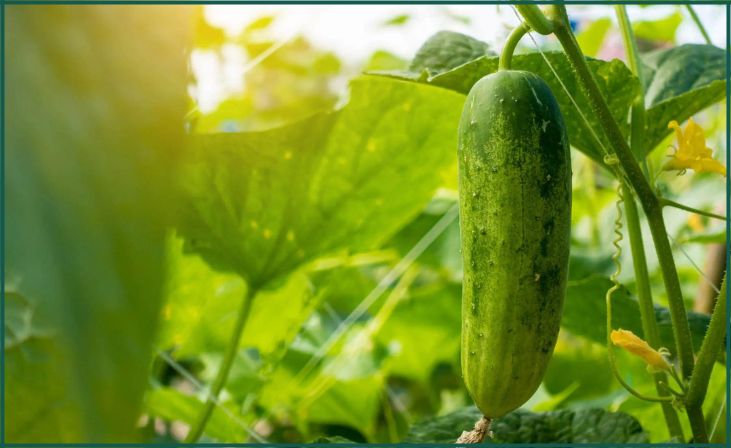
Bush cucumber varieties are ideal for growing in pots on your patio or balcony, providing a fresh supply of crisp, refreshing cucumbers for salads and snacks. Choose compact varieties that are suitable for container gardening and provide support for the vines to climb. Cucumbers require plenty of sunlight, warm temperatures, and consistent watering to thrive. Regular harvesting of ripe cucumbers encourages continuous production throughout the growing season.
Beans

Dwarf varieties of beans, such as bush beans or dwarf French beans, are well-suited for container gardening, making them perfect for growing in your kitchen garden. Choose pots with good drainage and provide support for the plants as they grow. Beans thrive in warm, sunny locations and require regular watering to keep the soil consistently moist. Harvest them when the pods are young and tender for the best flavor and texture, whether eaten fresh, steamed, or added to soups and stews.
Conclusion
In conclusion, cultivating a kitchen garden is a rewarding endeavor that not only provides access to fresh, nutritious foods but also fosters a deeper connection to the food we eat and the earth it comes from. From vibrant greens to flavorful herbs and bountiful vegetables, the possibilities are endless. By taking the initiative to grow your own food, you not only support your health and well-being but also contribute to a more sustainable and environmentally friendly way of living. So, roll up your sleeves, dig into the soil, and start reaping the many benefits of your own kitchen garden today!
FAQs
What are some easy-to-grow healthy foods for a kitchen garden?
What are some easy-to-grow healthy foods for a kitchen garden?
Leafy greens like spinach, lettuce, and kale, along with herbs such as basil, parsley, and mint, are excellent choices. Additionally, tomatoes, peppers, and microgreens are relatively simple to grow.
Do I need a lot of space to grow these foods?
Do I need a lot of space to grow these foods?
No, many of these plants can be grown in containers or small raised beds, making them suitable for even the smallest of spaces like balconies or windowsills.

